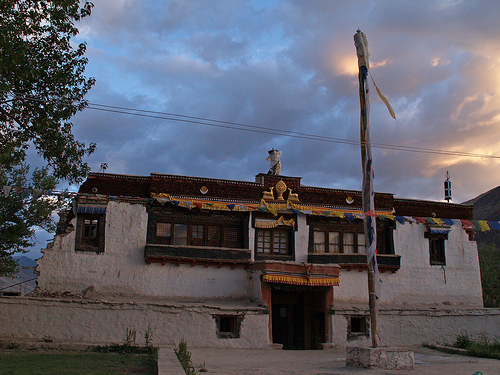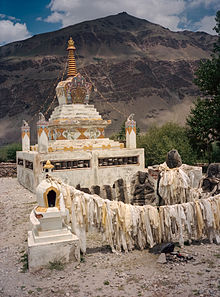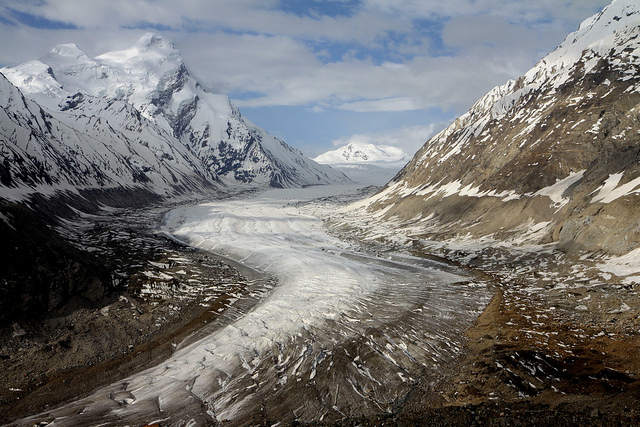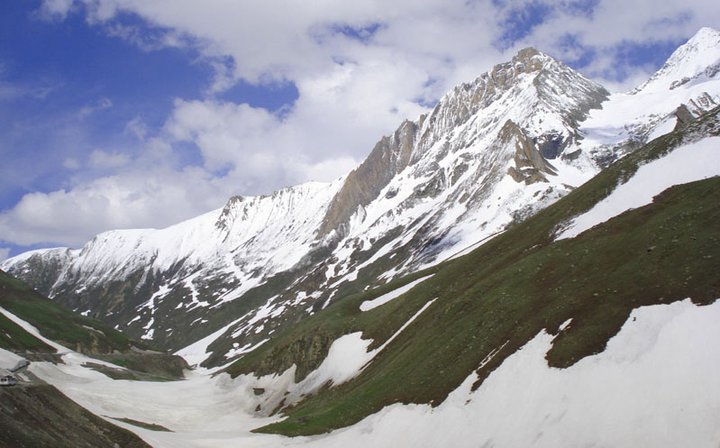India / Jammu & Kashmir/ Ladakh/ Ladakh
Sight Address : Sani Monastery is situated on the way to Kargil, about 6 km to the west of Padum is the Sani Monastery. Edit
Detail InformationEdit
Sani Monastery is among the oldest religious centres of Tibetan Buddhism in Ladakh and Zanskar regions. On the road to Kargil, six km west from Padum, Sani village is located at the intersection of Stod Valley and Zanskar in Jammu and Kashmir in northern India. Like Dzongkhul Monastery, it belongs to the Drukpa Kargyu school of Tibetan Buddhism, and is the only one of this order in Zanskar which has nuns. Sani Monastery was built in parts with each part dating to a different century. The chorten or the reliquary is the oldest past of the monastery which is believed to have been erected in the 2nd century. The Dukhang or the assembly hall was built in the early 17th century. The monastery is built in the form of a castle and has the Kanika Stupa at the back of its walled complex. It is believed that due to this Stupa, the monastery was linked to Kanishka (Kushan ruler of the 2nd century). The central praying hall is in the main building of the monastery. It is decorated with a vibrant collection of statues of Buddhist deities and Kargud-pa’s Lamas. The walls of the prayer hall have frescoes and thangkas (Tibetan silk paintings).
HistoryEdit
Sani Monastery (Gompa) is built to accommodate an ancient chorten 6 m (20 ft) high and of unusual shape, known as the Kanika Chorten, is presumed to date back to the time of the famous Kushan emperor, Kanishka. Kanishka’s era is now thought to have begun in 127 CE. ‘Kanika’ is a commonly used form of Emperor Kanishka’s name. He is famous in Buddhist literature as a promoter of Buddhism and he is said to have sponsored an important Buddhist conference in nearby Kashmir. This seems to be the only monastery in the region other than Gandhola Monastery in Lahaul which has a history which purportedly goes back to Kushan times. The 17th century Chronicle of Zaṅs-dkar (Zanskar) says that the (semi?) mythical,”high King Ge-sar Gesar of Gliṅ came to this blessed Zaṅs-dkar, where the religion of heaven and earth arose, and he broke the whole earth with his feet. ‘U-rgyan-pa-dma Padmasambhava came, and exorcised the demons; he kept down the bad Sa-bkra [= Sa-dgra, ‘enemy of the earth’?]. The female ogre was as if she had fallen on her back. The Sa-ni and Ka-ni-ka monasteries were erected at the head of the region, the Gña-nam-gu-ru monastery of Pi-pi-tiṅ on the heart, and the Gña-nam-gu-ru [monastery] of Byams-gliṅ on the feet. ” It is of interest to note that, although they are dated here to the time of Padmasambhava (late 8th to early 9th centuries), the Sani and Kanika monasteries are the first ones mentioned.Padmasambhava, or Guru Rinpoche, is said to have dwelt for five years in the small ‘Gamshot Lhakang’ squeezed between the main building and the corridor, to the right of the Kanika chorten. Inside may be seen a figure of Guru Rinpoche and historical scenes in half relief on both sides of the statue. Apparently, one can just see the white opening to a cave in a cliff across the river from the monastery where Padmasambhava is also said to have meditated for several years and it is still used as a meditation cell. The monastery is also claimed to be connected with the famous Indian Yogi Naropa (956-1041 CE). There is now small room next to the Kanika chorten where it is thought that Naropa meditated in which there is a veiled bronze statue of the yogi. A group of Kargyu nuns established a small retreat centre at “Starkhugnza” in the 1990s. It is a site above Sani which was founded by Ngawang Tsering (1657-1732), a famous Zanskar meditator. All of the nunneries in Zanskar are under the spiritual authority of the monks and few have much in the way of endowments.
Must SeeEdit
Popular
Visiting TimeEdit
N.A.
Closed OnEdit
N.A.
Best Season to VisitEdit
June to October.
Best Time To VisitEdit
Morning , Afternoon, Evening.
Time Required for SightseeingEdit
2-3 hours
Ticket Required : No Edit
Individual National Adult Rs. : N.A.
Kids Rs. : N.A.
Individual Foreigner Adult Rs. : N.A.
Kids Rs. : N.A.
Still Photo Camera Rs. : N.A.
Video Camera Rs. : N.A.
Guide Required : No Edit
Approximate cost: N.A.
Dress Code (If Any) : N.A. Edit
Dress Require: No
Restaurants NearbyAdd / Edit
How to ReachEdit
Taxi : Sani Monastery lies on the Kargil-Padum road, around 6 km before Padum. jeeps and gypsy taxis to reach the Sani Monastery. Taxis from Kargil to Padum costs around Rs. 75,00.
BUS : This place is well connected by leh .Himachal Tourism and State Transport Corporation along with J&K SRTC and several other travel companies run regular bus service to Leh.
B-class bus service run by the J&K SRTC is available thrice a week. However, tourists in group can even go for A-Class or even Super-Deluxe buses to reach here.
Train : The closest railway station is Jammu, there are regular train services from Delhi and many other cities to Jammu railway station, from Jammu you can take buses or taxi ride to Srinagar and then to Leh. From Leh you can take bus or taxi to The Sani Monastery Situated on the way to Kargil, about 6 km to the west of Padum .If you are for more adventures you can also rent bikes, available on rent in Leh and will cost you anywhere between rupees 600 a day for an Enfield to rupees 300 for others.
Air : Nearest Airport is Leh Airport .The following airlines (Kingfisher, Jet Airways, and Air India) operate regular flights to Leh from Delhi, Jammu and Srinagar. The duration of Delhi-Leh flight is just an hour long. Better booked the air-tickets before 2 or 3 months in advance because during May to October tickets prices are very high due to heavy tourist influx. From Leh you can take bus or taxi to the Sani Monastery Situated on the way to Kargil, about 6 km to the west of Padum from Leh. If you are for more adventures you can also rent bikes, available on rent in Leh and will cost you anywhere between rupees 600 a day for an Enfield to rupees 300 for others.
Others : Truck : Trucks often stop for hitchhikers, who are usually expected to pay half the bus fare, bargaining may be necessary. They are slower than the buses and sometimes stop for long periods to unload cargo.
Things to CarryEdit
- There are no eateries in Sani so it would be advisable to carry your own food while visiting the monastery.
Safety / WarningEdit
- Ladakh is one of the safest parts of India, and the most basic precautions are enough to keep you and your possessions safe. Most of the region is dotted with military cantonments every 50-80 kms, but mainly because of its strategic position on international border between India and China. The army plays major part in rescue and aid efforts and that is why you will require to produce identification documents or written permission from local authorities before entering some remote places.
HelplineEdit
- Police Control Room : 100
- Fire Station : 101
- Ambulance : 102/108




